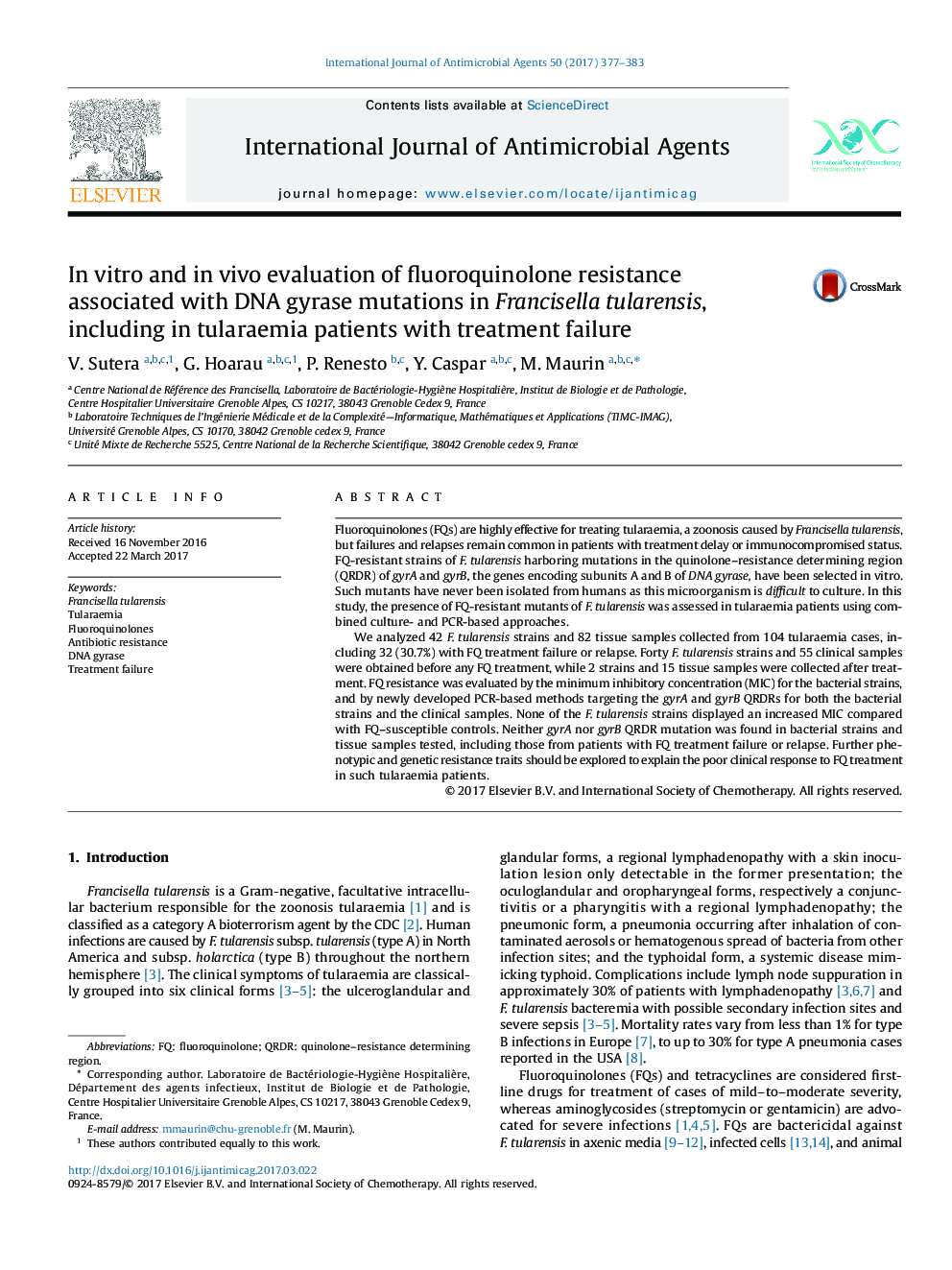| کد مقاله | کد نشریه | سال انتشار | مقاله انگلیسی | نسخه تمام متن |
|---|---|---|---|---|
| 5666792 | 1591737 | 2017 | 7 صفحه PDF | دانلود رایگان |

- Francisella tularensis can develop fluoroquinolone resistance in vitro.
- This resistance is caused by mutations in DNA gyrase encoding genes.
- Such mutants were not found in clinical samples from tularaemia patients.
- Fluoroquinolone treatment failures are not caused by DNA gyrase mutations.
- Other resistance mechanisms must be sought to understand the therapeutic failures.
Fluoroquinolones (FQs) are highly effective for treating tularaemia, a zoonosis caused by Francisella tularensis, but failures and relapses remain common in patients with treatment delay or immunocompromised status. FQ-resistant strains of F. tularensis harboring mutations in the quinolone-resistance determining region (QRDR) of gyrA and gyrB, the genes encoding subunits A and B of DNA gyrase, have been selected in vitro. Such mutants have never been isolated from humans as this microorganism is difficult to culture. In this study, the presence of FQ-resistant mutants of F. tularensis was assessed in tularaemia patients using combined culture- and PCR-based approaches.We analyzed 42 F. tularensis strains and 82 tissue samples collected from 104 tularaemia cases, including 32 (30.7%) with FQ treatment failure or relapse. Forty F. tularensis strains and 55 clinical samples were obtained before any FQ treatment, while 2 strains and 15 tissue samples were collected after treatment. FQ resistance was evaluated by the minimum inhibitory concentration (MIC) for the bacterial strains, and by newly developed PCR-based methods targeting the gyrA and gyrB QRDRs for both the bacterial strains and the clinical samples. None of the F. tularensis strains displayed an increased MIC compared with FQ-susceptible controls. Neither gyrA nor gyrB QRDR mutation was found in bacterial strains and tissue samples tested, including those from patients with FQ treatment failure or relapse. Further phenotypic and genetic resistance traits should be explored to explain the poor clinical response to FQ treatment in such tularaemia patients.
Journal: International Journal of Antimicrobial Agents - Volume 50, Issue 3, September 2017, Pages 377-383